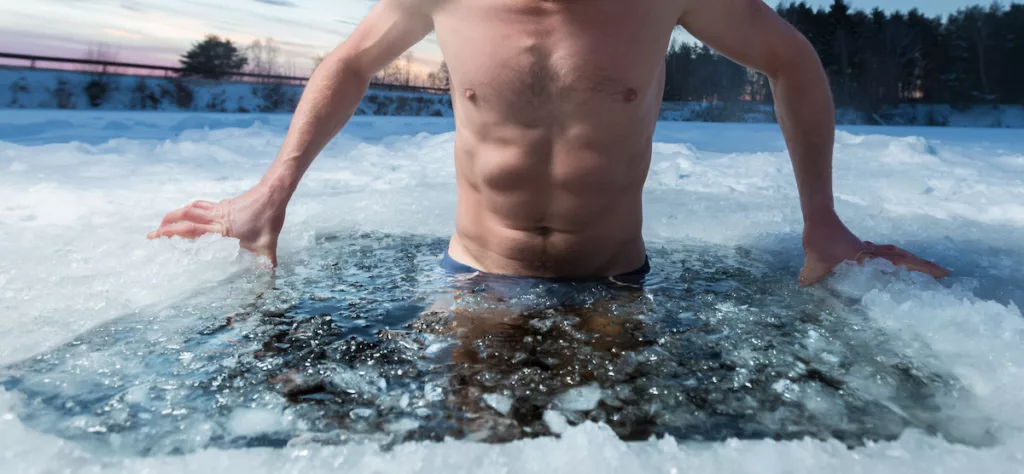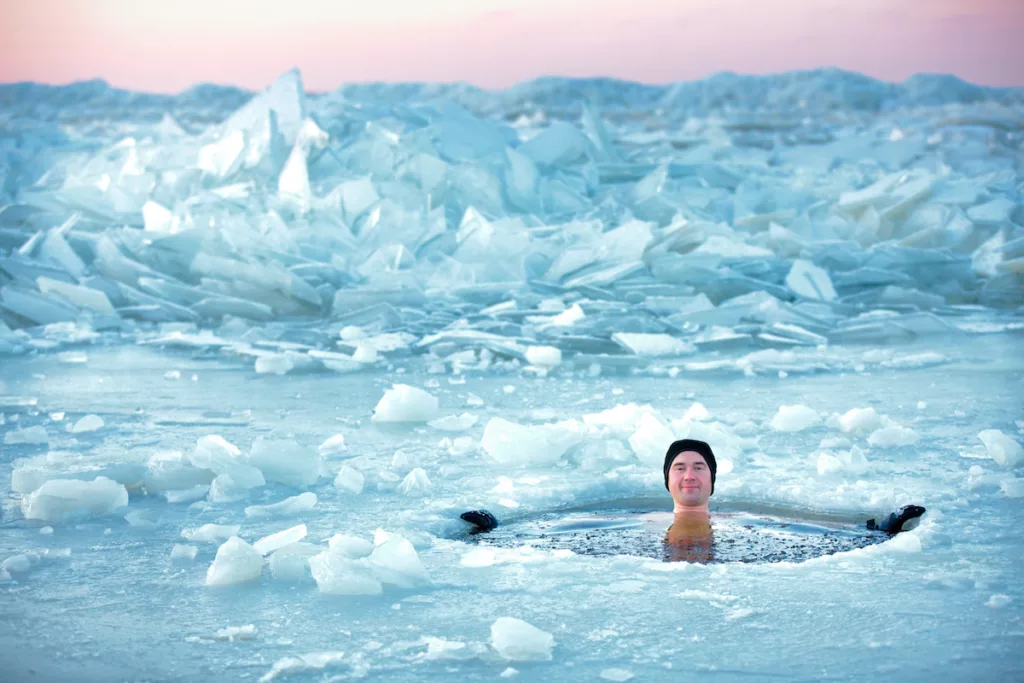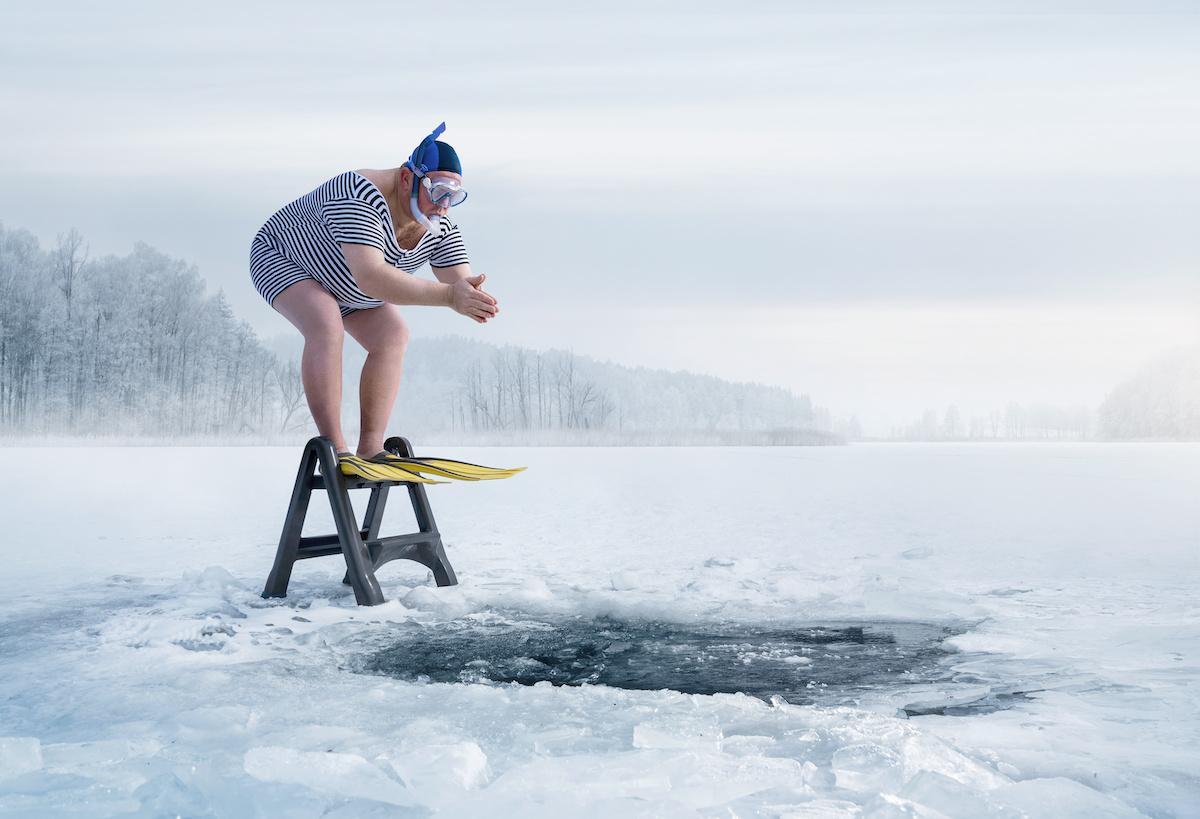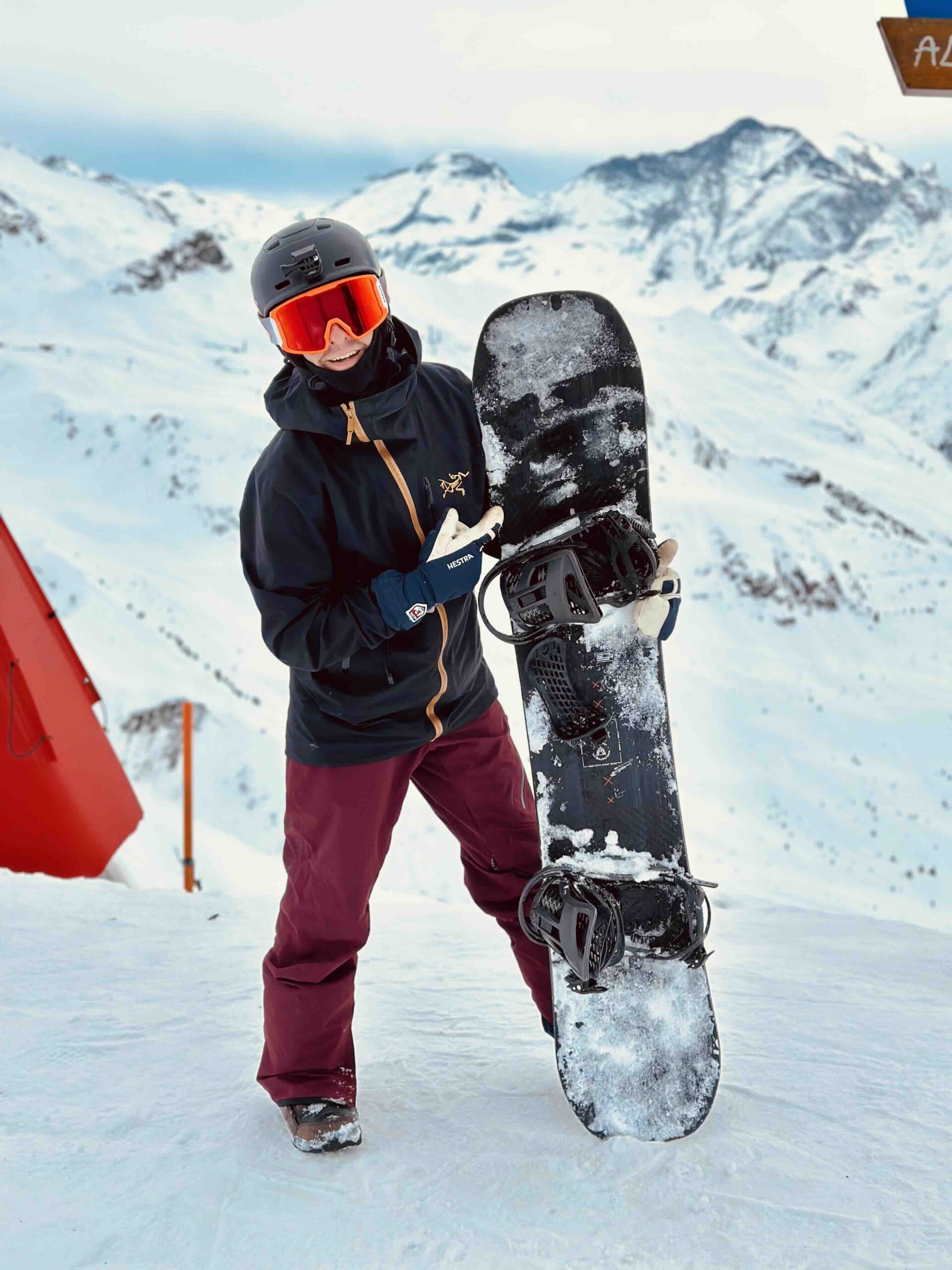Cold exposure training has seen a surge in popularity thanks to figures like Wim Hof, the Dutch world record holder, known for his impressive cold endurance feats. Wim’s unique abilities are not just restricted to him alone; I too had the opportunity in 2016 to train under his guidance at a workshop, delving deep into the Wim Hof Method (WHM).
Table of Contents
Historical Background of Cold Exposure
Cold exposure has deep roots in human history, intertwining with health, spirituality, and culture across different civilizations. Let’s embark on a journey through time to better understand this ancient practice’s evolution and significance:
- Ancient Civilizations:
- Ancient Rome: The Romans held a strong belief in the therapeutic qualities of cold water. They built monumental bathhouses that contained frigidariums — cold water pools where Romans would plunge after visiting the warmer rooms. This practice was believed to fortify the spirit, improve circulation, and invigorate the body.
- Nordic Traditions: The Norse people, from modern-day Scandinavia, were no strangers to the cold. Saunas were (and still are) a cultural cornerstone. Their ritual of alternating between a hot sauna and a jump into icy waters or snow rolls was more than just a health regimen—it was a social and spiritual affair, bonding communities and fortifying the soul.
- Ancient Rome: The Romans held a strong belief in the therapeutic qualities of cold water. They built monumental bathhouses that contained frigidariums — cold water pools where Romans would plunge after visiting the warmer rooms. This practice was believed to fortify the spirit, improve circulation, and invigorate the body.
- Eastern Practices:
- Japan: The Japanese tradition of Misogi is a Shinto practice of ritual purification using natural water sources. It often involves standing beneath waterfalls during the colder months, believing that the cold water cleanses the spirit and body. The endurance required for this practice is thought to cultivate discipline and resilience.
- Russia: The Russians have a deep-rooted tradition called “Morzhevatelstvo” or “Walrusing.” Enthusiasts, known as “Morzh” (Walrus), dip in frigid waters, even in the icy throes of winter, asserting that it boosts vitality and immunity. Complementing this is the Russian Banya, a sauna-like experience where after a hot steam bath, participants often plunge into snow or icy water.
- Japan: The Japanese tradition of Misogi is a Shinto practice of ritual purification using natural water sources. It often involves standing beneath waterfalls during the colder months, believing that the cold water cleanses the spirit and body. The endurance required for this practice is thought to cultivate discipline and resilience.
- Native American Tribes: Many tribes across North America practiced forms of cold exposure. One notable example is the Lakota Sioux, who performed the Inipi ceremony, a purification rite that uses sweat lodges. After sweating, participants would often jump into cold streams, completing their purification.
- European Health Movements: In the 18th and 19th centuries, European health enthusiasts advocated for “hardening” one’s body against diseases. They believed cold air and cold water exposure would strengthen the body’s defenses, leading to practices like sea-bathing in chilly waters and promoting open-air schools, where children would study outdoors, even in colder temperatures.
This rich tapestry of traditions underlines how various cultures recognized and revered the transformative power of cold. They intuited, and in some ways, understood, the health benefits we are scientifically uncovering today.
While practices varied, the core philosophy often converged on ideas of purification, resilience, and connection—whether with oneself, the community, or the divine.

Scientific Benefits of Cold Exposure Training
Cold exposure, although an age-old practice rooted in tradition, has been studied more extensively in recent years. Modern science has illuminated several physiological and psychological benefits:
- Boosting Metabolism: When exposed to cold temperatures, our bodies work hard to maintain our core temperature. This results in an increase in metabolic rate, which can lead to increased calorie burn. The body activates brown adipose tissue, or brown fat, which is metabolically active and burns white fat to produce heat in a process called thermogenesis.
- Improved Immune Function: Research has shown a significant increase in the levels of certain immune cells, including cytotoxic T lymphocytes and natural killer cells, following regular cold exposure. These cells play a vital role in the body’s defense mechanisms against pathogens.
- Enhanced Mood and Reduced Depression: Cold exposure can stimulate the production of norepinephrine in the brain, a neurotransmitter linked to mood regulation. A lack of this neurotransmitter is often associated with depression. Additionally, cold exposure might stimulate the release of endorphins, which are the body’s natural painkillers and mood elevators.
- Reduced Inflammation: Cold exposure has been shown to suppress the production of pro-inflammatory cytokines while enhancing anti-inflammatory cytokines. This can help reduce chronic inflammation in the body, which is associated with a host of health problems, including heart disease, arthritis, and certain types of cancer.
- Improved Sleep Quality: Some individuals report better sleep after cold exposure, which might be linked to the regulation of body temperature and the relaxation response after the initial stress of the cold.
- Enhanced Brain Function: Cold exposure can increase the production of cold-shock proteins, which have been linked to improved cognitive function and neuroprotection. One protein in particular, RBM3, has shown promise in protecting brain cells from damage in early studies.
- Increased Antioxidant Capacity: The body’s natural antioxidant defenses can be stimulated by cold exposure. These antioxidants play a crucial role in neutralizing harmful free radicals that can damage cells.
- Improved Circulation: Exposing the body to cold can improve circulation by teaching the blood vessels to dilate and constrict more efficiently. This vasodilation and vasoconstriction can help flush away toxins and bring nutrients to vital organs more effectively.
- Mental Resilience and Stress Tolerance: Regularly subjecting oneself to the controlled stress of cold exposure can foster mental toughness and improve one’s ability to handle other stressors in life.
- Hormone Regulation: Cold exposure can stimulate the release of various hormones, including adrenalin and testosterone, which play roles in energy, vitality, and overall well-being.

The Exciting Frontier of Cold Exposure Science
It’s worth noting that while the current research provides a fascinating glimpse into the potential benefits of cold exposure, the scientific exploration of this practice is still in its infancy.
As methodologies become more advanced and more studies are conducted, we’re likely to discover even deeper insights and perhaps unveil more profound health and psychological benefits.
The horizon of cold exposure science is vast and inviting, and we stand on the precipice of even more groundbreaking revelations in the years to come.
Cold Exposure Training Tips for Success
As you embark on this chilly endeavor, bear these tips in mind:
- Listen to Your Body: Stay attuned to your body’s signals. If it feels overly uncomfortable, retreat.
- Consistency is Key: Regularity in cold exposure will yield the best results.
- Integrate Other Practices: Melding breathing exercises, mindfulness, and even meditation with cold exposure can heighten the benefits.
Common Myths & Misconceptions about Cold Exposure
Cold exposure has long been surrounded by a cloud of myths, often stemming from old wives’ tales, misinterpretations, or simply lack of understanding.
As with any practice that challenges conventional wisdom and the limits of the human body, it’s crucial to discern fact from fiction. Before we dive into the techniques of how to get started with cold exposure, let’s debunk some of the most common misconceptions that might have clouded your perception or even held you back from experiencing the chilly embrace of the cold.
- Cold Exposure Will Make You Sick: One of the most prevalent myths is that exposure to cold air or water will give you a cold or the flu. However, these illnesses are caused by viruses, not cold temperatures. While drastic temperature changes can stress the immune system, moderate and controlled cold exposure can potentially strengthen it.
- You’ll Get Hypothermia Immediately: Hypothermia, while a genuine concern in extremely cold conditions, doesn’t set in as quickly as many believe. The body is resilient and has mechanisms to defend against rapid heat loss. That said, it’s vital to know the symptoms and to be cautious, especially when immersing oneself in freezing water.
- Only the Physically Fit Can Tolerate Cold Exposure: While those who are conditioned might have an advantage in cold environments, even beginners can benefit from controlled cold exposure. With the right mindset and approach, virtually anyone can gradually adapt to colder temperatures.
- Shivering is Bad: Shivering is a natural response of the body to generate heat when it’s cold. While excessive shivering can indicate that you’re pushing your limits, moderate shivering is a normal part of the adaptation process.
- Cold Exposure Burns a Tremendous Amount of Calories: While cold exposure can increase metabolic rate, the number of extra calories burned isn’t as significant as some believe. It’s a beneficial adjunct to other metabolic boosters, like exercise, but shouldn’t be viewed as a primary weight loss tool.
- The Wim Hof Method is Just About Cold Exposure: Wim Hof’s practices involve more than just cold exposure. Breathing techniques and meditation are crucial components. Focusing solely on the cold misses a significant portion of his teachings.
- Cold Showers Can Replace Regular Showers: While cold showers have their benefits, they might not be as effective at removing oils and dirt from the skin and hair. It’s a good practice to first have a regular shower and then finish with a cold burst.
- You Should Dive Right into Extreme Cold: Just like with any form of training, gradual progression is key. It’s dangerous to jump into an ice-cold river without prior conditioning. Starting with cold showers and gradually increasing exposure is a safer approach.
- Cold Exposure is Only for the Brave: It’s a misconception that only the brave or daredevils can benefit from cold exposure. With the right training, guidance, and respect for one’s limits, anyone can explore and benefit from this ancient practice.
- All Cold Exposures are Equal: The body reacts differently to dry cold, wet cold, and wind-chilled conditions. For instance, being in cold water can draw out body heat up to 25 times faster than cold air. It’s crucial to understand the environment you’re in and prepare accordingly.
By understanding and debunking these myths, one can approach cold exposure with a more informed and open mindset, reaping its benefits while staying safe.

Potential Risks & Downsides of Cold Exposure Training
Cold exposure training, like all health and fitness regimens, is a delicate balance of risk and reward. While countless enthusiasts, including myself, have touted the numerous benefits it can bring, it’s paramount to approach this practice with an understanding of its potential pitfalls.
Engaging in cold exposure without proper knowledge, preparation, or respect for the body’s limits can have adverse consequences. Below are some of the notable concerns associated with cold exposure training:
- Risk of Hypothermia: Extended exposure to cold temperatures, especially if not conditioned or prepared, can lead to hypothermia. This condition occurs when the body loses heat faster than it can produce, causing a dangerously low body temperature.
- Cold Injuries: These include frostbite, chilblains, and trench foot. Frostbite, in particular, can be severe, leading to the freezing of skin and underlying tissues. If untreated, it can cause lasting damage.
- Cardiovascular Strain: The cold can increase blood pressure and heart rate, which might pose risks for those with heart conditions.
- Sudden Cold Shock Response: Jumping into icy water can cause an involuntary gasp reflex, leading to inhalation of water and potential drowning. It can also cause heart palpitations or even cardiac arrest in susceptible individuals.
- Decreased Immune Response: While moderate cold exposure can potentially boost immunity, prolonged and extreme exposure can suppress the immune system, increasing vulnerability to infections.
- Potential for Overconfidence: As with any training, there’s the risk of overestimating one’s abilities. Some might dive into extreme cold too quickly, risking severe consequences.
- Underlying Health Conditions: For those with certain health conditions, like Raynaud’s disease, cold exposure can exacerbate symptoms.
- Respiratory Challenges: Cold air can trigger asthma attacks or other respiratory challenges in susceptible individuals.
- Physical Discomfort and Mental Stress: Beyond physical risks, constant shivering, discomfort, and the mental strain of enduring cold can be a deterrent for many, leading to reduced adherence to the practice.
- Not a Panacea: While cold exposure has benefits, it’s not a cure-all. Over-relying on it while neglecting other health and wellness practices might not yield the desired results.
While these risks exist, many can be mitigated with proper training, gradual exposure, and listening to one’s body. It’s always essential to consult with a healthcare professional before starting a cold exposure regimen, especially for those with underlying health conditions.
Four-Week Introduction To Cold Exposure:
Week 1: Begin by taking your normal shower. After you have finished washing and rinsing, switch the water to the coldest setting possible and stay under for one minute. You can go longer if you like, but one minute is a great starting point.
Week 2: Begin your shower with one minute on the cold setting. Switch it to whatever is comfortable and have your normal shower. Finish with one minute under the cold setting.
Week 3: Again, begin with the cold setting for one minute. Switch to normal for one minute. Continue to alternate hot and cold in one-minute intervals until you are done. Finish with one minute under the cold setting.
Week 4: Continue with the same schedule as week three, but include one day with a full ten-minute cold shower.
Bonus Round: If the cold shower is comfortable and you want to go a little further, you can get two to three 10kg bags of ice. Fill your bathtub about half full with cold water, then get in and put the ice on your chest.
Get a small aquarium thermometer to track the temperature in your training log. You can easily work up to 15 or 20 minutes two to three times per week in just a few weeks.
For those keen on getting started, I’ve charted out this progression to ease you into the world of cold exposure. As you forge ahead, remember to respect your body’s limits and gradually push boundaries. With time and consistency, cold exposure can be a transformative and invigorating journey.
In Conclusion: Embracing the Chill with Knowledge and Caution
Cold exposure training has traversed the annals of history, from ancient civilizations harnessing the rejuvenating power of icy waters to modern-day enthusiasts pushing the boundaries of human endurance.
This age-old practice, revitalized by figures like Wim Hof, has become a nexus of tradition, science, and self-improvement. Yet, like all practices that intersect with our health, it demands a thorough understanding and respect.
Throughout this guide, we’ve explored the rich tapestry of cold exposure’s historical background, demystifying its roots and connecting them to contemporary practices.
We’ve highlighted the science-backed benefits, from heightened immune response to mental resilience, all while underscoring the fact that the research landscape is ever-evolving.
With every revelation, there’s a reminder: the full scope of cold exposure’s potential is still unveiling itself.
Yet, as with any potent tool, it’s essential to use it wisely. We’ve addressed myths, debunked misconceptions, and spotlighted the potential risks to ensure you’re not venturing into the cold unarmed with knowledge.
Cold exposure training is as much about mental fortitude as it is about physiological change. Hence, arming oneself with knowledge, listening to one’s body, and proceeding with caution is imperative.
Whether you’re a seasoned cold warrior or a curious novice, remember that this journey is deeply personal. The cold can be both an ally and an adversary. How you navigate this relationship—through understanding, respect, and patience—will determine your experience.
As you embark or continue on this chilly voyage, may you harness the cold’s power with wisdom, reap its benefits with gratitude, and always prioritize safety and well-being above all.
And if in doubt, feel free to talk to us anytime.
FAQ
What is Cold Training?
Cold training, or “cold thermogenesis,” is a strategic and deliberate exposure to cold temperatures. Rooted in both ancient rituals and modern science, it’s a technique designed to stimulate physiological adaptations in the body. Methods vary from controlled cold showers and ice baths to outdoor immersions in natural cold environments. The aim goes beyond mere endurance; it’s about leveraging the cold to optimize physical and mental well-being.
Is it OK to Train in the Cold?
Training in the cold is not only permissible but can be beneficial when done correctly. The key lies in understanding one’s limits and ensuring a systematic approach. Cold training, like any regimen, requires an understanding of its principles: progressive exposure, listening to one’s body, and recognizing the difference between beneficial discomfort and potential harm. It’s a balance of harnessing the benefits while ensuring safety.
Is Cold Therapy Really Good for You?
Cold therapy’s efficacy is rooted in both empirical evidence and growing scientific research. Benefits span across enhancing the lymphatic and circulatory systems, reducing muscle inflammation, and releasing endorphins. Neurochemically, cold exposure can activate the body’s ‘fight or flight’ response in a controlled manner, honing mental sharpness. However, individual experiences with cold therapy can vary, and what works for one may not work for all. It’s essential to approach it with an informed perspective, considering individual health conditions and potential contraindications.
What Does a Cold Plunge Do?
A cold plunge, often termed as a ‘cold water immersion’, subjects the body to cooler temperatures, triggering a cascade of physiological responses. This immersion stimulates vasoconstriction, shunting blood away from the extremities and toward vital organs. It also elicits a neurochemical release, including endorphins, which are natural painkillers and mood elevators. Beyond the immediate reactions, regular cold plunges are believed to enhance metabolism, promote mental clarity, bolster the immune system, and speed up muscle recovery.
How Long Should You Stay in a Cold Plunge?
The ideal duration in a cold plunge varies based on the individual’s experience, tolerance, and the water temperature. For beginners, starting with 1-3 minutes is advisable, gauging their body’s response. As one becomes accustomed, durations can extend to 10-15 minutes or longer. However, it’s crucial to always listen to one’s body. Excessive exposure, especially without prior conditioning, can be harmful.
Is Cold Plunge Therapy Good for You?
Cold plunge therapy can offer several health benefits when done correctly. These include reduced muscle inflammation, enhanced circulation, boosted immune function, improved mental resilience, and even potential metabolic benefits linked to brown adipose tissue activation. However, it’s essential to approach cold plunge therapy with an informed perspective. While many find it invigorating and therapeutic, individuals with certain health conditions, like cardiovascular issues, should consult a healthcare professional before starting.
Is a Cold Plunge Better Than an Ice Bath?
Both cold plunges and ice baths serve the primary purpose of cold exposure, but the experience and benefits can slightly differ. Cold plunges typically have a consistent temperature, offering a controlled immersion experience. In contrast, ice baths can start at a certain temperature and gradually warm up as the ice melts. While both can reduce muscle soreness and inflammation, some argue that the added pressure from the ice in ice baths can enhance these benefits. Preference often boils down to personal choice, specific goals, and accessibility. Some may find cold plunges more sustainable, while others swear by the intensified cold of an ice bath.


I’m just getting into cold plunging and was wondering how to best pair it with excersize and training. I’ve heard that cold water immersion after intense excersize may inhibit recovery since its vasoconstricting. I love all of the benefits its giving me now but am about to start back on a rigorous training program and hope to use cold immersion to help with performance and recovery.